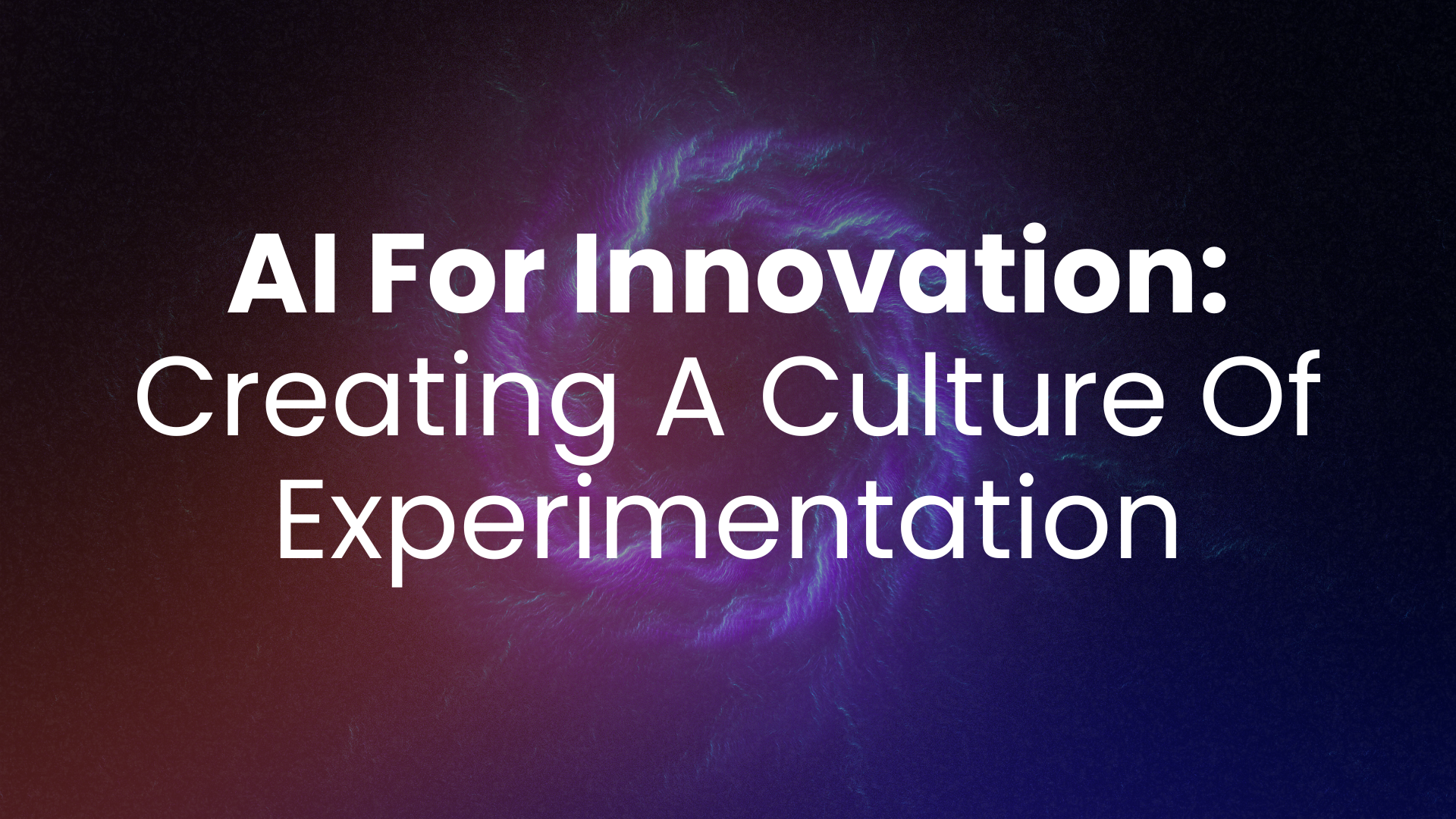AI for innovation: creating a culture of experimentation
For CTOs navigating AI transformation, the greatest challenge isn't the technology, it's the culture. Whilst your organisation may have invested in cutting-edge AI capabilities, true innovation emerges only when teams feel empowered to experiment, fail, learn and build rapidly.
The Innovation Paradox
Many enterprises approach AI strategy with the same methodologies that served them well in traditional digital transformation. However, AI-native organisations operate differently. They recognise that innovation requires a fundamental shift: moving from risk-averse perfectionism to structured experimentation.
The paradox? Successful AI transformation demands both rigorous governance and creative freedom. Without governance, experimentation becomes chaos. Without experimentation, governance stifles the very innovation AI promises to deliver.
Building the Foundations for Experimentation
Creating a culture where teams confidently experiment with AI begins with three essential elements:
Psychological safety paired with clear boundaries. Your teams need explicit permission to test hypotheses and fail fast, within your parameters. Establish governance frameworks that clarify which data sets are accessible, what ethical guidelines apply and how to measure success. Sandboxes are an ideal method to set this up.
Dedicated time and resources for exploration. Innovation cannot be an afterthought squeezed between operational demands. Leading organisations allocate specific time to experiment, whether through innovation sprints, dedicated "innovation days," or separate innovation teams. This signals to the whole company that exploration is strategic.
Rapid feedback loops and learning mechanisms. Experimentation only drives innovation when insights are captured and shared beyond the immediate team. Implement lightweight processes to document hypotheses, results and lessons learned. These need not be burdensome; even simple templates or regular demo sessions where teams showcase experiments can accelerate organisational learning and share knowledge, allowing others to succeed faster.
Moving Past Pilot Purgatory
Too many AI initiatives languish in "pilot purgatory": forever testing, never scaling. A transformation strategy that prioritises experimentation must also include clear pathways and timelines from proof-of-concept to production.
This requires collaboration between innovation and technical teams and operational functions. When governance teams understand the experimental process, they can expedite rather than obstruct the journey from prototype to production. When innovation teams understand compliance requirements from the outset, they design experiments that can scale. Ideally, one person’s role in this structure will be to “translate” from governance to experimentation, and back again.
Moving Forward
Creating a culture of experimentation is an ongoing commitment. Start small: identify one team ready to pilot new approaches to AI innovation. Establish governance frameworks that enable rather than constrain. Measure project velocity alongside traditional success metrics.
The organisations that thrive in an AI-native world won't be those with the most sophisticated algorithms, they'll be those where experimentation is woven into the fabric of how work gets done.
How WeBuild-AI Can Help
At WeBuild-AI, we help enterprises to navigate AI transformation successfully.
Our approach combines technical expertise with a deep understanding of organisational change, ensuring that AI capabilities translate into continued business value. We are AI-native and pride ourselves on providing 10x value for enterprises through our solutions.


